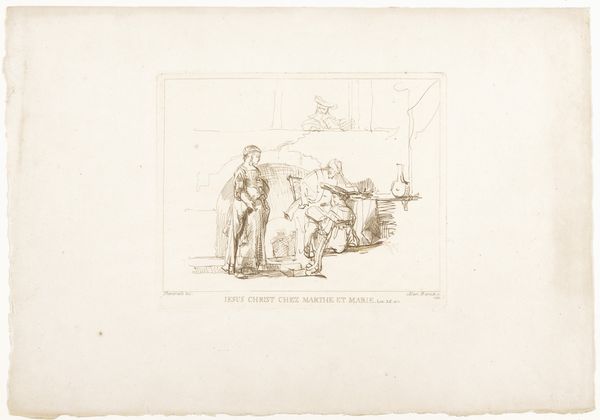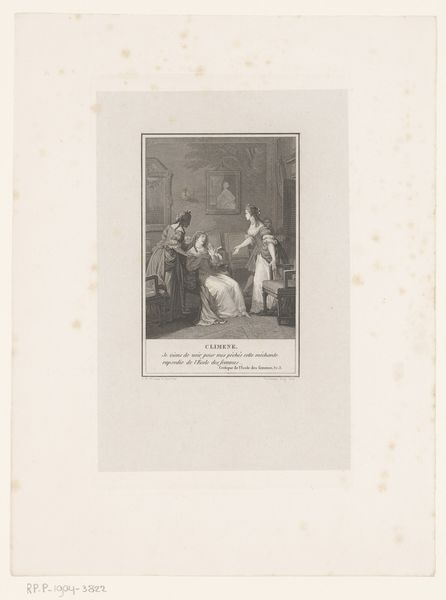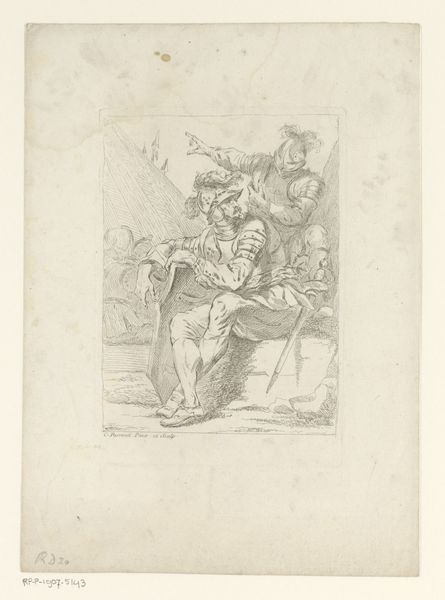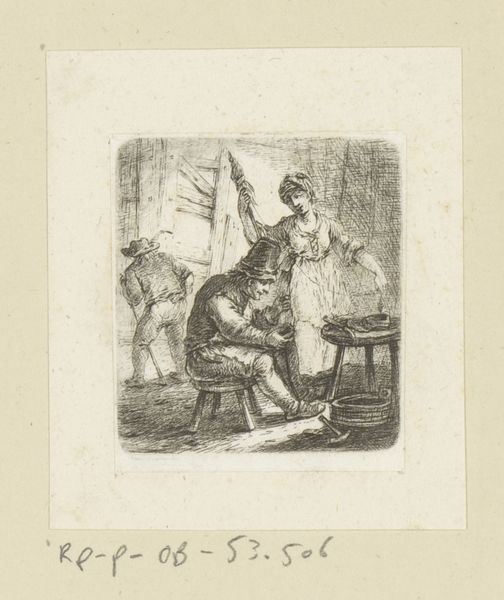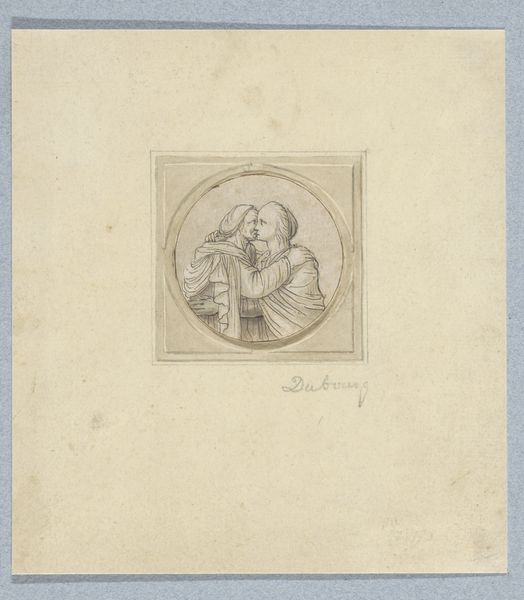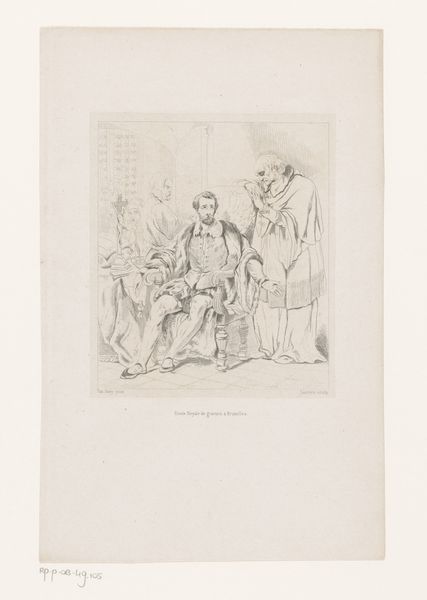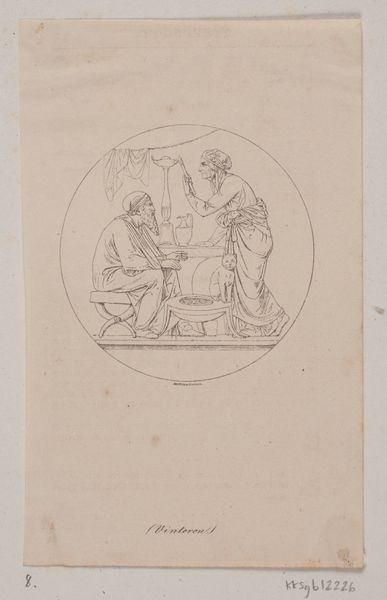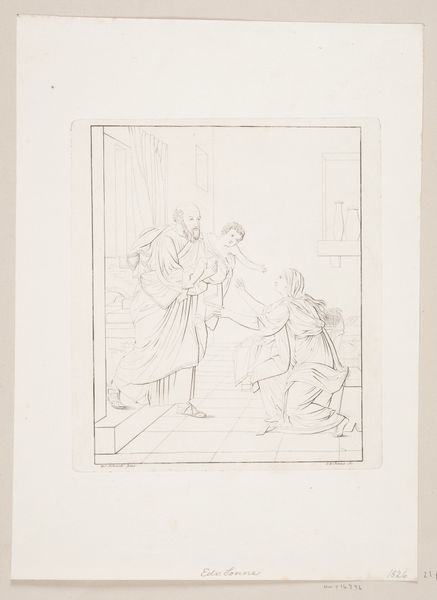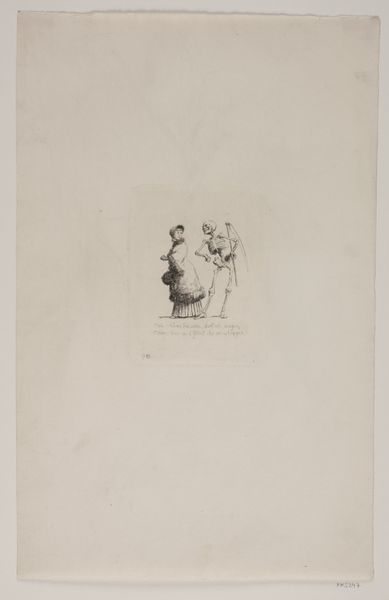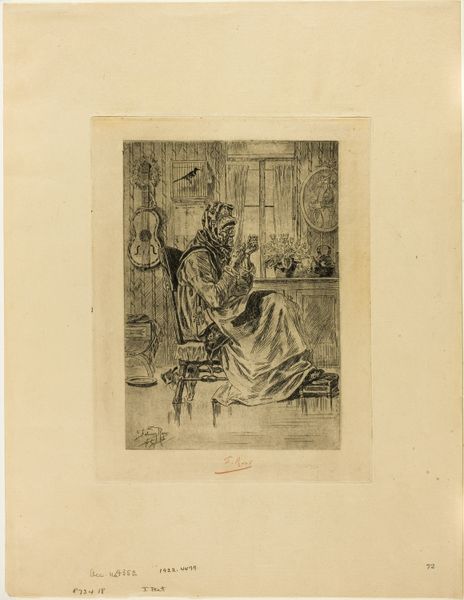
Pietà, with the body of Christ supported by the Virgin and two holy women, Saint John stands to the left; from 'Recueil d'estampes d'après les plus beaux tableaux et d'après les plus beaux desseins qui sont en France, Cabinet Crozat' after a drawing by Perugino 1724 - 1744
0:00
0:00
drawing, print, engraving
#
drawing
# print
#
figuration
#
history-painting
#
italian-renaissance
#
engraving
Dimensions: Sheet: 21 in. × 15 1/4 in. (53.3 × 38.8 cm) Plate: 9 1/2 × 7 5/16 in. (24.1 × 18.5 cm)
Copyright: Public Domain
Curator: This engraving, dating from sometime between 1724 and 1744, is based on a drawing by Perugino, titled 'Pietà, with the body of Christ supported by the Virgin and two holy women, Saint John stands to the left; from 'Recueil d'estampes d'après les plus beaux tableaux et d'après les plus beaux desseins qui sont en France, Cabinet Crozat'.' Editor: Even in its sketched, almost ethereal quality, I feel this profound sense of grief. The lines are so delicate, yet they manage to convey the heavy weight of the figures' sorrow. Curator: The image's origins interest me greatly. We see here a reproduction, a print, made long after the Italian Renaissance that testifies to Perugino's continued influence. Think about how prints like this disseminated artistic ideas across Europe, democratizing access to great works of art and allowing for new interpretations and re-contextualizations. Editor: Indeed, consider the power of the Pietà as an image—a universal symbol of loss, empathy, and feminine strength through shared suffering. The careful arrangement of the figures echoes the sacred dramas that resonated across cultures, expressing emotional burdens that endure. Curator: It also hints at the fraught nature of religious iconography throughout the ages. To see an image like this divorced from its specifically religious context can prompt us to consider how these archetypal images shape—or perhaps manipulate—collective emotional experiences across genders and social classes. Editor: There's such a formal quality as well. It really speaks to enduring cultural ideals—ideas around beauty, pathos, even performative grieving. But doesn’t that ordered grace also subtly mask the brutal realities inherent in this story? Curator: Absolutely, and further highlights the critical work needed to unravel the aesthetic and historical layers behind it all, bringing to the fore those narratives of oppression and power—especially given that a drawing served as an initial study. What can we make of a copy, of a copy? Editor: The emotional depth in these copied symbols really makes one consider how potent cultural images still affect how we feel and recall deeply held truths. Curator: Examining artistic influence through a critical lens and these copies, invites us to think more deeply about what we preserve from the past. Editor: Precisely, a reflection on symbols and collective sorrows, reinterpreted anew with each encounter.
Comments
No comments
Be the first to comment and join the conversation on the ultimate creative platform.


